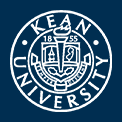Files
Download Full Text (14.3 MB)
Description
James Buchanan in Baltimore, MD wrote to John Kean, Philadelphia, PA. James Buchanan discussed banking issues in this letter. People included: Wilson, Valck, Swan, and Pleasants, Mr. Dall, John Campbell, Bladensburgh, William Potts, Thomas Buchanan places included: Branch Bank of Maryland, Thomas Buchanan, Mr. Thomborough, Governor Johnston, Mr. Willing, Mrs. Bingham, LeGay Polgreens. Place included: England, Barbados.
Author/Creator
James Buchanan
Recipient
John Kean (1756-1795)
Creation Date
5-18-1793
Document Type
Manuscript
Location
Baltimore, Maryland
Inventory Location
Bay 1, Column 1, LHC Series 2
Recommended Citation
Buchanan, James. James Buchanan to John Kean, May 18, 1793. Manuscript. From Special Collections Research Library and Archive, Kean University, Liberty Hall Collection 1790s. https://digitalcommons.kean.edu/lhc_1790s/211
Rights
This collection is open to the public for research use. Copyright remains with Kean University. Credit this material. Personal photographs may be made for research purposes. Inquiries regarding publishing material from the collection should be directed to Lynette Zimmerman, Executive Director at the Liberty Hall Academic Center & Exhibition Hall at lzimmerm@kean.edu.
Publishing Repository
Special Collections Research Library and Archive, Kean University



Collection
Liberty Hall Collection, 1711-1847 (bulk 1790-1830)